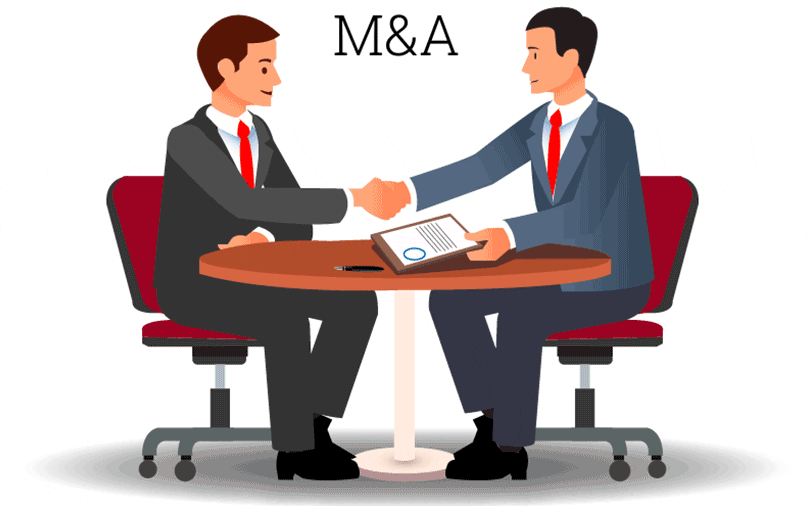Did you know that 2018 was globally the most happening year for deals in the capital markets and mergers or acquisitions in particular?
In investment banking circles, 2015 is remembered and used as a case study for two M and A deals. The deals of SABMiller PLC’s tie-up with Anheuser-Busch InBev worth 106 billion$ and the Allergan PLC tie-up with Pfizer Inc. for 160 billion$. Both deals are expected to be completed soon and are memorable because they comprise deals between rival forces merging. Both of these recently announced megadeals form giant conglomerates in their respective verticals.
Dealogic ranks M and A deals. According to their ratings, the top 5 deals of recorded times are as follows.
1. 1999 deal of Mannesmann being acquired by Vodafone AirTouch for USD 172 billion
This largest deal of all times was a cross-border, resisted hostile takeover. At that time Mannesmann was Germany’s number one wireless carrier and Vodaphone likewise Britain’s biggest wireless carrier. It was still the time of voice-only fixed lines and the sale of voice-only mobiles was not only popular but booming as well. Smartphones were in their infancy and Germany was definitely not a hostile takeover capital market.
Fighting the rivals for three months, Mannesmann tried for a merger deal with the French company Vivendi. Vodaphone struck back by forging a sweet deal with the French company. Once the writing was on the wall Mannesmann gave up as even the shareholders were in favor of the Vodaphone offer for a merger. Thus was born the world’s largest deal in investment banking and the biggest conglomerate mobile phone service provider.
2. 2015 deal of Allergan and Pfizer merger worth USD 160 billion
This deal is a unique case study where Allergan and Pfizer set about creating the planet’s biggest company in pharmaceuticals with Pfizer’s Celebrex and Viagra on the same selling platform as Allergan’s Botox. The Pfizer move for inversion meant lowering of taxes as the US company could use the technique of inversion to claim incorporation in foreign countries with lower tax-rates while merging with Allegran who are Dublin-based. The US government termed unpatriotic such inversion moves and passed a bill to restrict such moves. However, the Allergan-Pfizer union could sidestep the rules since the acquiring company was indeed a foreign company.
3. 2013 deal of Verizon Wireless merging with Verizon Communication in a merger worth USD 130 billion
Vodafone was not the buyer but seller in this deal. Verizon Communications the U.S.-based giant in the telecom field bet big on broadband and cellphone services to buy the 45 percent stake it did not own from its JV partner Vodaphone, in a deal worth 130 billion$. Dealogic also ranks this the largest corporate bond issue in investment banking, because financing was through 49 billion $ in bonds by Verizon making Verizon Wireless today’s largest carrier with more than 137.5 million global customers for its wireless services.
4. 2015 deal of SABMiller acquisition by Anheuser-Busch InBev for USD 117 billion
The 117 billion$ worth merger of the two brewery giants created a giant union selling a close 33% of the global beer sales. Anheuser-Busch the Belgium-based renowned brewer found a willing sales merger partner in buying SABMiller who are U.K.-based brewers. SABMiller bargained its way to a great deal almost 50 percent higher than its closing price just a day before announcing the deal. This merger has stellar brands like Budweiser, Pilsner Urquell and Stella Artois from a 64 billion $ worth titan brewery today. The anti-trust approvals are still pending in many countries and when the deal fails, SABMiller will still receive the breakup fee of 3billion$.
5. 2003 deal of Time Warner’s acquisition by America Online in a marriage of sorts worth USD 112 billion
According to Bloomberg America Online’s purchase of Time Warner worth 112 billion$ could be famous as the 5th largest deal in history, and infamous as the worst corporate marriages in M and A global history. What was being touted as a synergetic marriage of new and old media giants, with Time Warner being the largest entertainment company and AOL being the pioneer of bringing internet to its customers, was doomed to a disastrous start. In just a few months the economy slumped with the bursting of .com bubble. The two companies were culturally too different to establish the promised progressive initiatives. Later that year AOL had accumulated losses of 99 billion $ which grew to 100 million$ plus in the next few years. The initial losses included charges that were reported at declining share values of AOL and in 2009 AOL was spun off by Time Warner amid huge shareholder losses.
Concluding notes:
An important investor lesson learned was that the mergers do not always yield benefits promised. Do an Investment Banking Course with Imarticus Learning to learn the nitty-gritty of M and A deals and exercise caution as a shareholder investor. All the best with M and A deals and your investment banking course!











